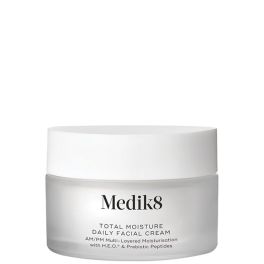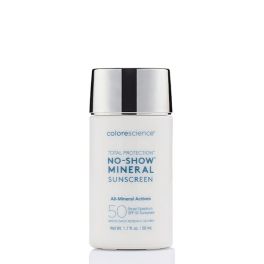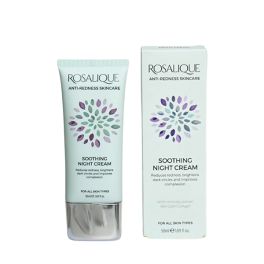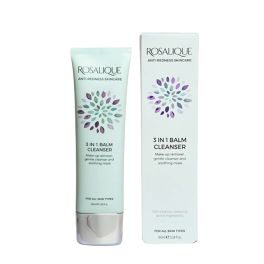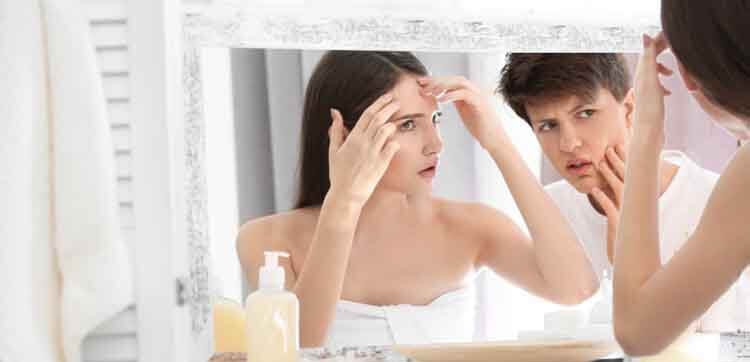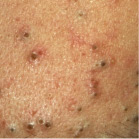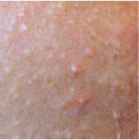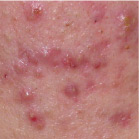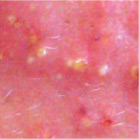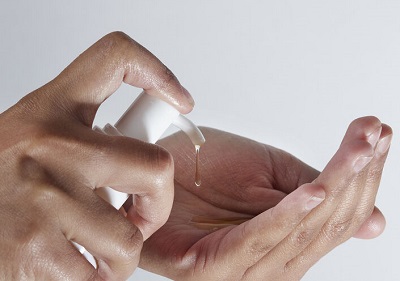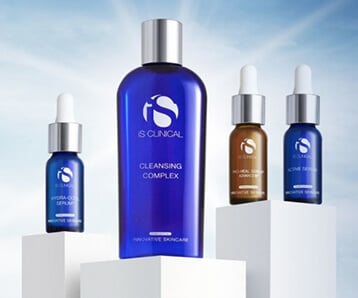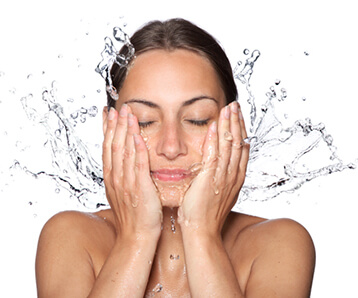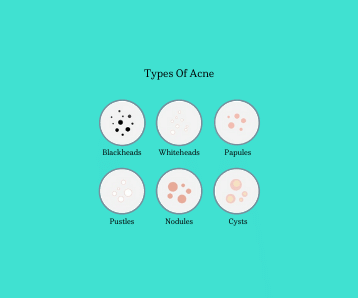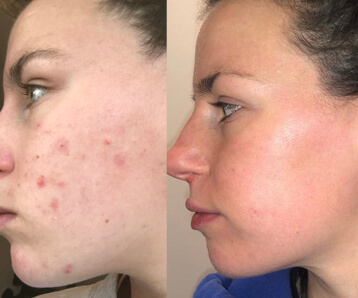Acne: Treatment, Types, Causes & Prevention by iS CLINICAL Posted on 20 Jun 2022
What is Acne?
Acne is a common skin condition which usually affects the face, neck, chest, and back. Acne is usually treatable, though sufferers may need treatment for several months. Most people with acne are aged between 12 and 25, but sometimes it can strike older and children too. The question of how to treat acne widely depends upon the severity of acne which can range from mild to severe.
Causes of Acne
Acne in adults is mostly caused by the overactivity of the sebaceous glands in the skin. It is not infectious, so you cannot get it from another person. But it can be hereditary. That means the condition can pass through genes.
Sebaceous glands under the skin surface make oil (sebum) which keeps the skin supple. The sebum comes out through pores (tiny holes). Hormone changes especially at puberty stimulate the sebaceous glands and make more sebum. That is why acne is commonly seen in teenagers. When pores get blocked (by thickening of the skin and dead cells) and when sebum collects under these blocked pores pimples or acne occurs. There is a bacterium called Propionibacterium acne which is normally found in the skin. It multiplies in trapped sebum. Sometimes inflammation occurs making the surrounding skin red. The spots can get larger and fill with pus. When several pustules are close by they can get larger and form nodules and cysts. These inflamed spots can heal with time but sometimes may leave a discoloured area (hyperpigmentation). Scars can be left on the skin if cysts are ruptured.
Some of the other common acne causes are listed below:
Cosmetics: when you use a new product or a product which doesn’t suit your skin, it starts to break out and this is the kind of acne you get. It could be from makeup, sunscreen, products with ingredients that clog your pores, irritating fragrance from fabric softeners etc.
Food Allergies: Food allergies are generally very subtle but some foods in certain skin types can pack a big punch in the acne department. These include sensitivity to milk, dairy, iodine, gluten, biotin, sugar, soy, etc
Poor Cell Turnover Rate: when dead skin cells are not being shed at the proper rate and contribute to pore blockage; it leads to acne.
Disturbed Skin: When your skin is irritated (red, flaky, itchy, stingy) or overly dry, it can make you more vulnerable to p.acnes. With poor skin barrier function, your skin doesn’t do a good job protecting itself and keeping itself healthy.
Underlying Health Problems: Underlying health problems can also cause acne. These include candida, thyroid problems, PCOS, diabetes, digestive imbalances, and metabolism issues.
Stress, Lack of Sleep: Stress can wreak havoc on the skin and worsen acne symptoms. But it isn’t so direct a cause of acne that every time you feel stressed, you instantly get a new pimple. The alternative, being stress-free, also doesn’t guarantee clear skin. Stress, however, is something that can aggravate acne and make it worse.
Toxin Build-Up: Toxins can build up in your body through constipation or poor liver/kidney/intestinal function. When this happens, the build-up gets released through your skin, resulting in acne.
What are the stages of acne?
Acne can be divided into 4 different grades depending on how it looks and its severity. The severity differs from one person to the other.
Once you know what your acne looks like, it is easy to understand which grade you are in and look for the best acne treatment option. The treatment depends on the severity of the acne. In the same individual, the grade of acne may change depending on the time of year, hormonal changes (such as during menstruation, during pregnancy or puberty), stress levels (during exams, crisis situations, break up or loss of a loved one) etc. So, the acne treatments have to be changed for best output and effective results.
Grade 1 – Mild Acne
Grade 1 Acne is the mildest of 4 acne types hence it is also most known as mild acne. This Acne consists of comedones (blackheads) mostly on the nose, and a few papules which are small, red breakouts typically found on the cheeks. These breakouts are minimal and tend to be occasional.
Grade 2 – Moderate Acne
In moderate acne, there are more blemishes. Apart from the T zone area, lesions can occur anywhere in the face. The skin has several whiteheads which are also called closed comedones. They appear like raised white or yellowish dots. When squeezed white material will come out.
Around a white head, there is surrounding redness due to mild inflammation and sometimes mild swelling of the area. Apart from whiteheads, there are papules (firm elevated reddish or skin-coloured bumps when felt feel rough and irregular) and pustules (small bumps or blisters filled with yellowish material /pus) which are also called pimples.
Papules, when squeezed no fluid, will come out. Pustules when squeezed, yellow colour pus will come out sometimes mixed with blood. Pus is an accumulation of skin debris, white blood cells, and bacteria.
Grade 3 – Severe Acne
Inflammation is marked and there will be a lot of papules and pustules over the face. Since the lesions occur near to each other, it can spread and merge with each other and look like crops. This will lead to skin damage and even without squeezing, scarring can occur once healed. In severe acne, infection is deep within the skin. There will be more redness and mild swelling of the face.
Grade 4 – Cystic Acne
This stage is very severe. The blemishes are large. They can occur not only on the face but neck, shoulders, back and sometimes arms. They are deep and firm to touch. There are cysts which look like a boil or a big blister. The size of a cyst may be about half a centimetre in diameter. They contain pus inside.
There are also firm or hard bumps called nodules. They do not contain pus.
When the face is touched, it may cause pain.
Scarring is very common in Cystic acne as the lesions are deep.
How do we prevent getting Acne?
Common topical therapies include benzoyl peroxide, topical antibiotics (clindamycin topical marketed as Cleocin-T or erythromycin topical), topical retinoids (Retin-A, Renova, adapalene or Differin, tazarotene or Tazorac), azelaic acid (Azelex), salicylic acid, milk and fruit acids (also called AHAs, including glycolic acid, lactic acid, malic acid, citric acid, mixed fruit acids) and products decreasing inflammation.
- Avoid eating excessive amounts of chocolates, sugary foods
- Avoid eating or drinking excessive amounts of dairy products
- Avoid stress, practice relaxation techniques, and have a good night's sleep
- Drink plenty of water and stay hydrated, dehydrated body signals the skin to produce oil to keep it moisturized.
- Help keep your skin hydrated by using moisturisers but look for the irritants in the moisturiser that may disturb your skin
- Keep your face clean - wash at least twice a day to remove impurities, dead skin cells, and extra oil from your skin’s surface.
- Proper personal hygiene – Wash hair regularly to prevent dandruff, keep skin clean
- Avoid too much exposure to the sun as it may dehydrate your skin resulting in oil production.
- Use clinically proven creams and makeup products which suit your skin type
- After using make up cleanse the face well
- Avoid using greasy creams as they can block pores
- Don’t panic if you get a pimple – because that will only worsen the issue. Be patient with the treatment plan.
Product Recommendations- iS CLINICAL® products helpful in treating acne include: ACTIVE SERUM™, PRO-HEAL™ SERUM ADVANCE+, HYDRA-COOL™ SERUM, CLEANSING COMPLEX, EXTREME PROTECT SPF30.
Click here to view iS CLINICAL Acne regime
Written by iS CLINICAL













